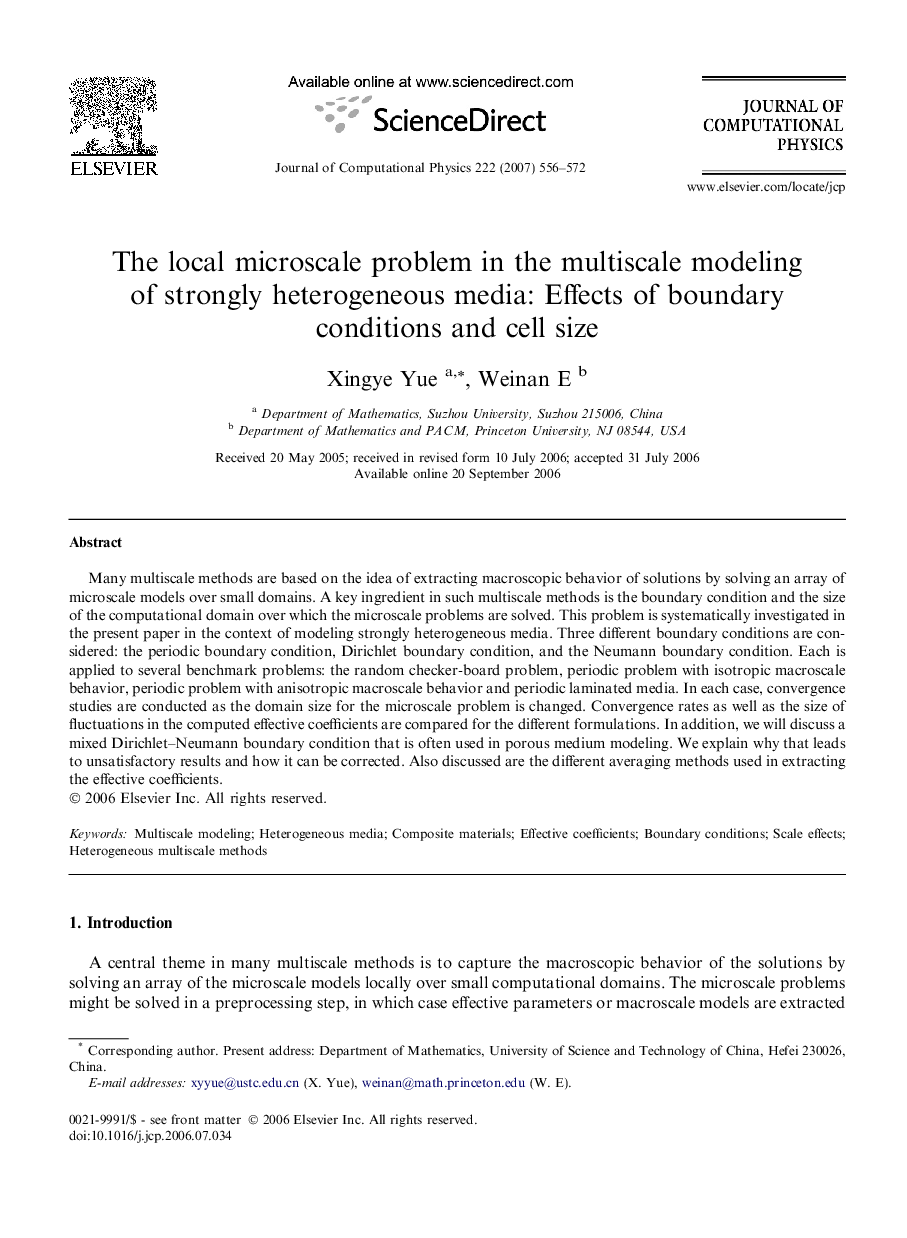| Article ID | Journal | Published Year | Pages | File Type |
|---|---|---|---|---|
| 520930 | Journal of Computational Physics | 2007 | 17 Pages |
Many multiscale methods are based on the idea of extracting macroscopic behavior of solutions by solving an array of microscale models over small domains. A key ingredient in such multiscale methods is the boundary condition and the size of the computational domain over which the microscale problems are solved. This problem is systematically investigated in the present paper in the context of modeling strongly heterogeneous media. Three different boundary conditions are considered: the periodic boundary condition, Dirichlet boundary condition, and the Neumann boundary condition. Each is applied to several benchmark problems: the random checker-board problem, periodic problem with isotropic macroscale behavior, periodic problem with anisotropic macroscale behavior and periodic laminated media. In each case, convergence studies are conducted as the domain size for the microscale problem is changed. Convergence rates as well as the size of fluctuations in the computed effective coefficients are compared for the different formulations. In addition, we will discuss a mixed Dirichlet–Neumann boundary condition that is often used in porous medium modeling. We explain why that leads to unsatisfactory results and how it can be corrected. Also discussed are the different averaging methods used in extracting the effective coefficients.
